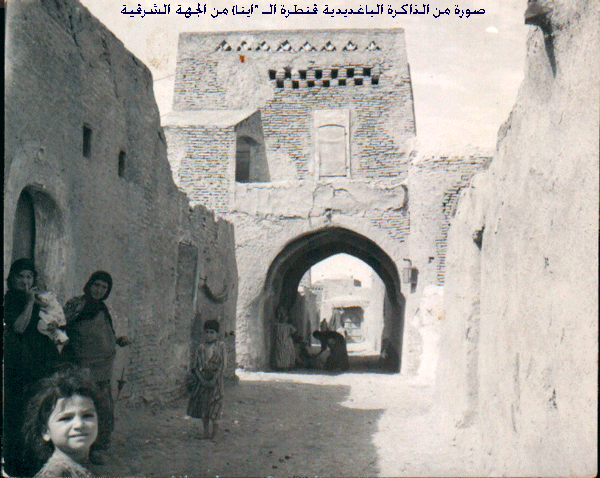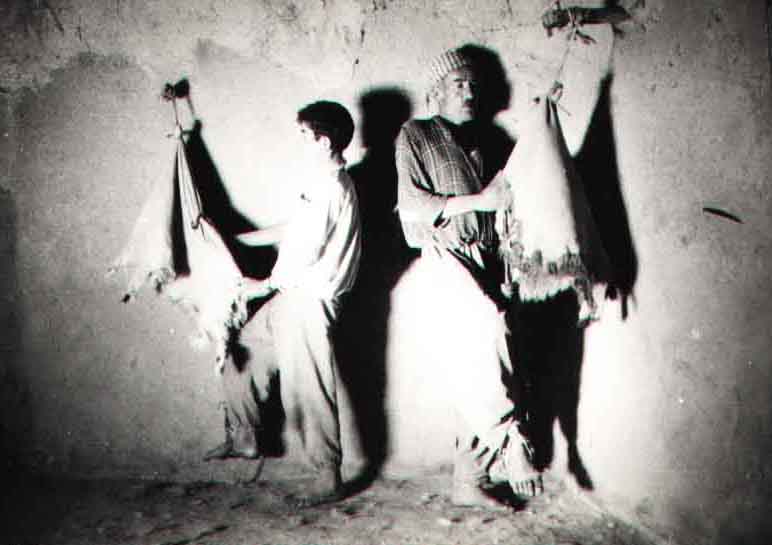|
Handicrafts
Najat
Habash

People of Bakhdida are well known for their weaving skills,
unfortunately this handicraft faded away. Most weavers were farmers who owned
sheep. In spring, after the sheep are sheared .

The household women start skirting the smelly fleece then wash and dry them
After drying the ladies start to card the clean wool to be softer for spinning.


Spinning is done by wooden hand spindles. It was very common to see ladies and
girls spin their wool in to fine yarns while they were chattering in their
neighbourhood.

The yarns are then collected in to big bundles to be ready for
dyeing. Powder dyes were used because they were economical.

The weaver then uses the traditional loom to weave the final product locally
known-BERMALA-as shown in the picture above, bermala is about a meter wide and
more than two meters long. Few pieces are sewn together to make wider rugs.
Not long ago weavers modernized their handicraft by weaving rugs from fabric
ribbons that are cut thinly and spun the same way as the wool. This product was
prefered because it is softer than the woolen one besides it doesn't smell at
all.
Ladies knitted woolen sockes too from the undyed wool especially worn by elderly
men.

Different rugs were made from low quality wool which is of the tails and legs
area of the sheep. The product is called -KACHA- and is made by pressing the
wool together in a traditional and artistic way. This kind of rug is very warm
for the winter season and is made by skillful locals as shown in the picture
above.
Another very well known handicraft still exist is sheepskin tanning. The
sheepskin is treated locally in a very traditional way.

The final product is
known -FARWA- used as a winter coat by local men. These coats are produced for
selling in other cities of Iraq too. The most expensive one is made of little
lambskin.

Quilt making is one of the fine crafts that many Bakhdida women are also well
known of. Before marriage, groom's family get the wool ready for the double
quilt.

The quilter is then called home to sew the would-be couple quilt. single
quilts are produced too.
Pottery making is another craft that I heard of from my grandmother when I was
growing up. ARKANA is a name still in my memory of one of the pots that my
grandmother made and used to serve water for her domestic animals like chicken.
She made her pottery herself, first she would prepare the mud and shape it to
the desired design and then after drying she would cook it. This craft still
exists to some extent as few ladies are known for locally making mud ovens
(TANORTA).
Nowadays people depend on the metal TANOOR but the flavor of the bread doesn't
match the one that is baked in the mud oven.
|


